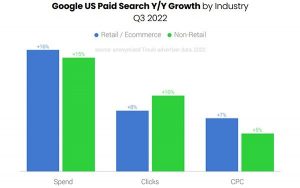
Free-Photos / Pixabay
As workforce trends continue to shift and evolve, companies must now consider not only how they will prepare for 2021, but for the next decade. Advanced technologies and generational change are already accelerating a new way of thinking in the organization of companies. A shortage of skilled workers in many industries is further driving these developments. But why should divisions collaborate? What are the benefits?
Traditionally, companies have operated with four core divisions: operations, finance, legal, and HR, with each functioning on its own, with power flowing from top to bottom, and employees feeling like grunts performing tasks in which they had no voice. And because each of these divisions may be operating with different management and procurement systems, communications between the divisions can be affected, resulting in disputes and operational problems.
HR is usually in charge of scheduling, for example, but without the input of the operations department and their productivity reports, they might schedule employees who regularly don’t work well together, thus affecting productivity. The fact is, when employees have strong professional and interpersonal relationships, communicate effectively, and understand each other’s roles and responsibilities within the organization, both businesses and customers benefit from the outcome.
With many companies relying on leaner workforces due to layoffs, inter-divisional cooperation and communications are more critical now than ever; traditional company divisions may be making things worse. In typical hierarchical divisions, miscommunication or poor communication can be a key contributor to employee dissatisfaction and lower job productivity.
Employees can be left feeling under-appreciated, become disengaged, less productive and even seek employment elsewhere. In other words, bad communications can cost your business money. A recent study by The Society for Human Resource Management (SHRM) suggests internal miscommunications cost even small companies with just 100 employees an average of $ 420,000 per year.
How widespread is this problem? A recent study from health services provider Cigna Corporation found 35% of people felt “a general sense of emptiness and 37% a disconnection from others in their workplace.” Through better interaction across managerial, HR, and operations divisions, workers get a better sense of the company’s big picture, and improved workplace relationships.
One development is already driving these changes, the digitization of assets and communications technology that is revolutionizing our living and working conditions. These two environments merged into one for many workers this past year, as COVID-19 required many companies to shift to a work-from-home routine. But while this change was born out of necessity, the technology accompanying and allowing it also promises to reduce transformational pain. Indeed, according to the Cygna study, 60% of respondents agreed that using communication tools at work helped them feel more connected and establish meaningful relationships.
Two other factors are rapidly making this new thinking about company divisions a necessity. For starters, a shortage of workers in many areas, particularly seasonal employment and retail, is putting pressure on companies to use their employees more efficiently. This has been exacerbated this year by COVID-19 limitations, amongst them travel restrictions that make it more difficult for people to get to places offering seasonal work. Warehouse job listings are up, for example, reflecting the current shift to online shopping, but employees need to get to the warehouses and distribution centers.
Demographic changes, in addition, are already affecting hiring practices and training as Generation Z joins the workforce. The good news? Generation Z tends to embrace flexible working hours and spaces, and is comfortable with the use of technology, especially mobile tech.
It’s important to remember that these developments are affecting small companies and large corporations alike. And because of this, while breaking down the barriers between traditional company divisions may appear intimidating, it’s imperative. Research by The Institute for Corporate Productivity (i4cp) has found that high-performing companies are around 5.5X more likely than their competitors to encourage what they called “purposeful collaboration” across the board within their organizations.
The goal is to mold the company into a flexible and efficient organization that can quickly adapt to ongoing change with motivated employees ready to deal with any business scenario; and one which can proactively anticipate business developments by sharing knowledge throughout the company.
Only then will your organization have the speed and ability necessary for future success.
Business & Finance Articles on Business 2 Community
(55)
Report Post




